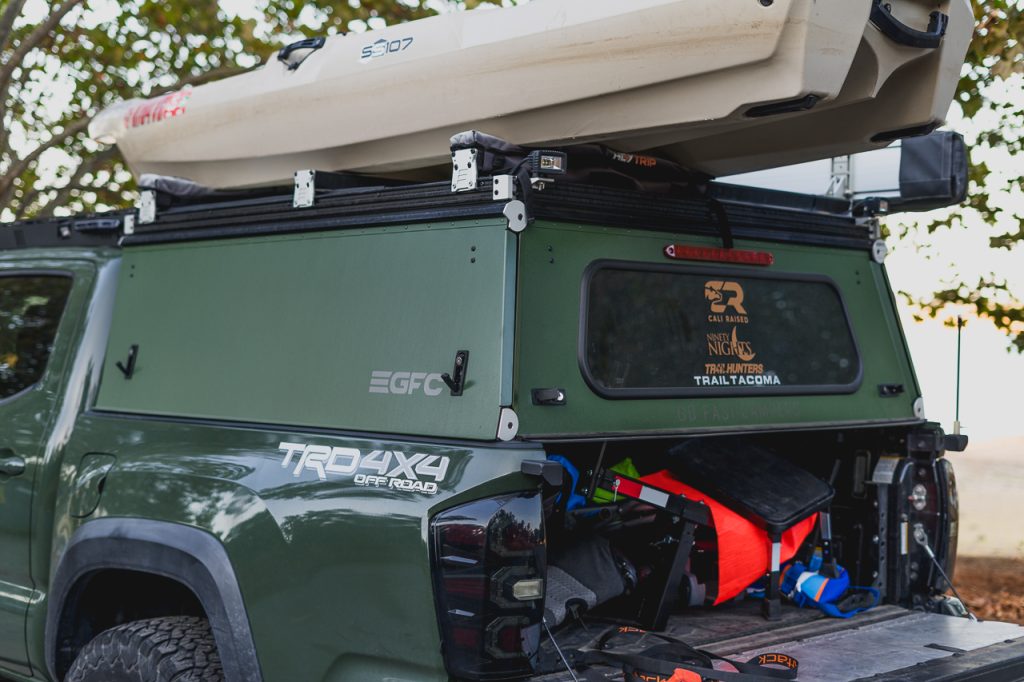
Looking through forums and comments on YouTube or Instagram will reveal just how polarizing of a topic it is to add or to not add a topper (aka camper shell) to your truck.
- “You bought a truck for a reason, keep it a truck.”
- “If you wanted an SUV, you should’ve just bought a 4Runner.”
- “You shouldn’t get a topper because of blah, blah, blah…” (paraphrasing)
Trust me I’ve read it all. I’ve even received the same comments on my social media channels.
In order to make the case for one (in my experience), and to address common reasons why you shouldn’t buy one (from around the internet and unhappy people), I’ve put together this post. We’re going to run through the 12 main things people bring up. And then try to present a counter argument, using my GFC Topper as an example. Call me a myth buster, or whatever you like.
If you want to see more about GFC, check out their site below.
- Go Fast Campers: Visit Website
Table Of Contents
1. High Cost
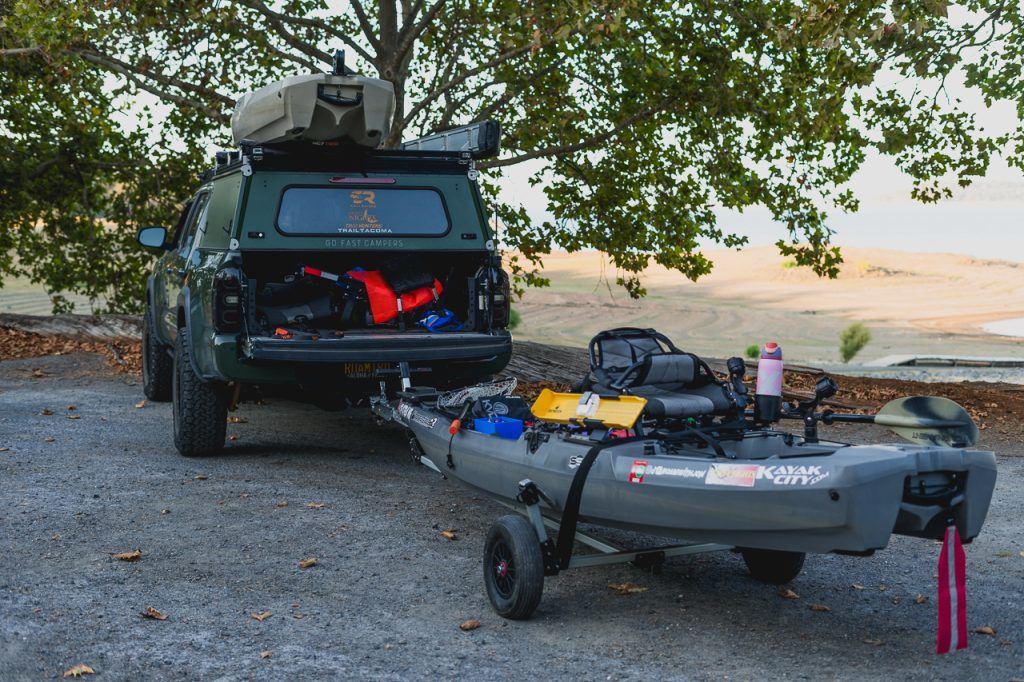
Let’s start with the most obvious… cost. There’s no getting around it. Toppers aren’t cheap.
Sure, there is a range… From cheap to premium options, they all still have a steeper price tag. Especially compared to their alternatives (tonneau covers, bed racks, etc.). However, depending on how you outfit your bed for working, camping, off-roading, (if that’s the intention) it’s not hard to spend a bunch of money. You also have to think about function. For some, having a super functional setup makes life easier and/or more enjoyable, and that’s worth something. Just look at us.. all of us Toyota owners pay a premium for what we consider as the best vehicle platform. We’re not strangers to buying nicer and more reliable things.
That said, the GFC (and competing higher end options), start and hover around the $4,000 mark. There are always add-ons and optional accessories if you wanted to take the next step. Like the saying goes, you get what you pay for. That includes better quality, a US-made product, great customer service, and a simpler way to get replacement parts.
2. Resale Value Impact
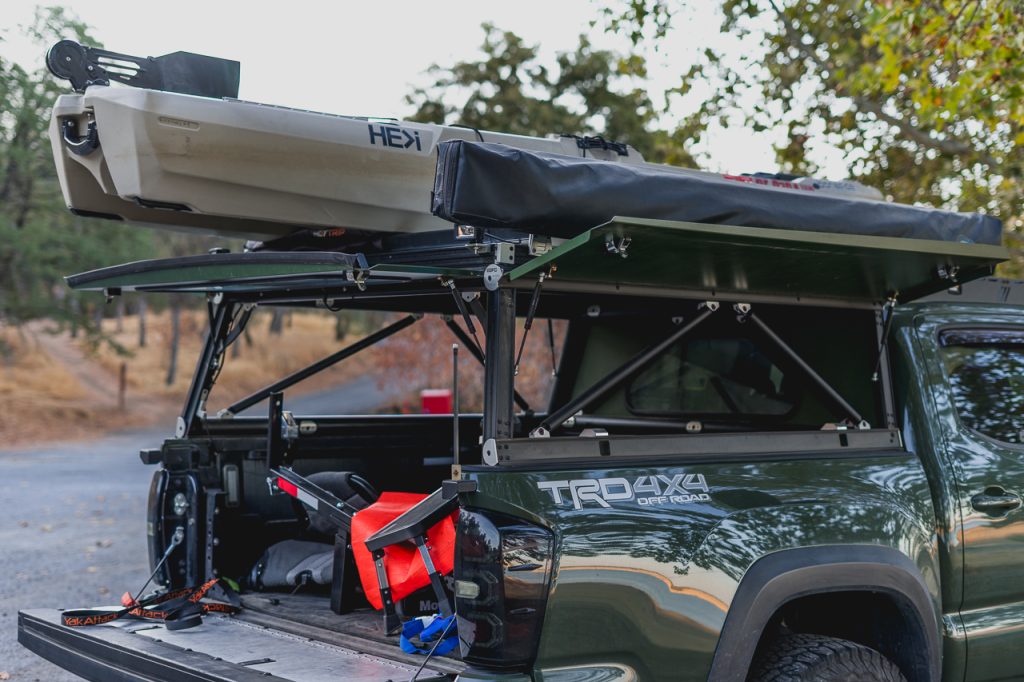
Staying on the financial side of things, there are those that believe adding a topper to your truck will ruin its resale value, or make the truck harder to sell. In actuality (at least in the Tacoma market) a topper typically increases your resale value. Often if you go in to trade your truck, I’ve seen the dealer will offer some additional funds or at least make the negotiation process easier. Depending on what truck you have, it actually makes a more attractive buy to some buyers.
If you don’t feel like you’re getting what you need when selling your truck, you could always sell it online and recoup some money there. I’m still seeing used toppers around on the internet floating in the $2500-4500 range. GFCs actually hold their value really well. They’re desirable (at least to a committed fan base), durable, and you have the factor the cost of going to get one (driving, shipping, install, etc.). It’s not unheard of that people get nearly full retail for a setup that’s been taken care of. Even after 1-2+ years of use. So if you think about it… you’re really not losing if it serves you well. At all.
3. Additional Weight
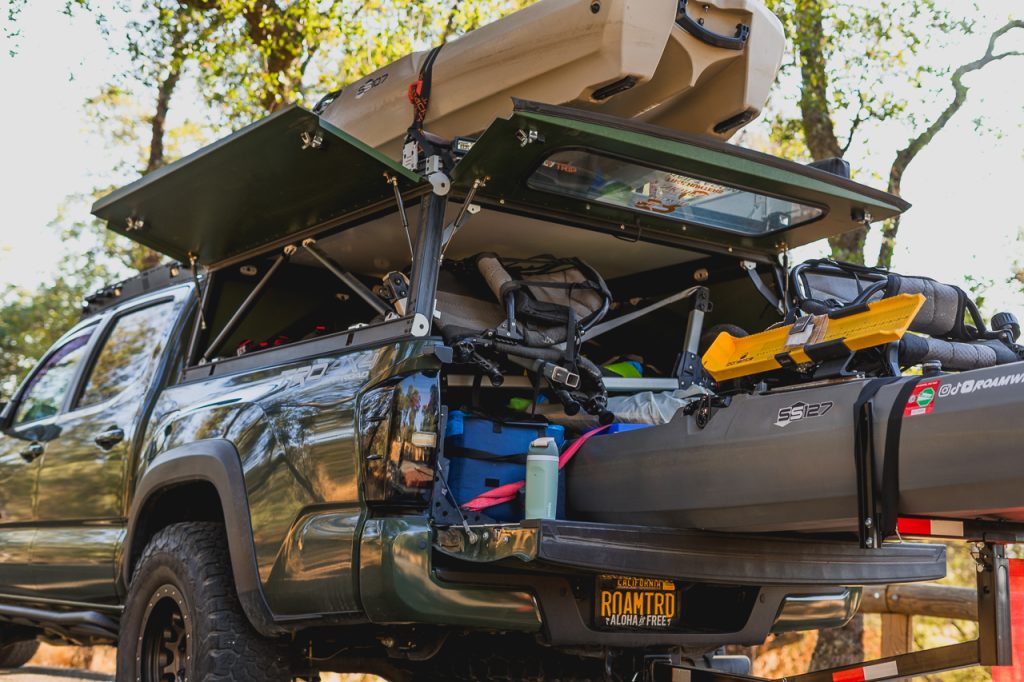
A lot of talk on the internet is that toppers are generally pretty heavy, and that you’ll need to upgrade your suspension to handle the additional weight. While I might still recommend you look into some kind of spring upgrade, it really depends on your load.
The average weight for a fiberglass or steel option is around 175-200 lbs. Some are heavier, but that’s usually larger/taller builds. The GFC variant comes in at around 135 lbs. depending on the configuration and accessories. Which is pretty low impact, relatively speaking. After installing my topper, I didn’t have any noticeable rear sag or changes in how the truck handles. Also good to note, at 135 lbs., it’s not terribly hard to remove with two people.
4. Restricted Access To Bed
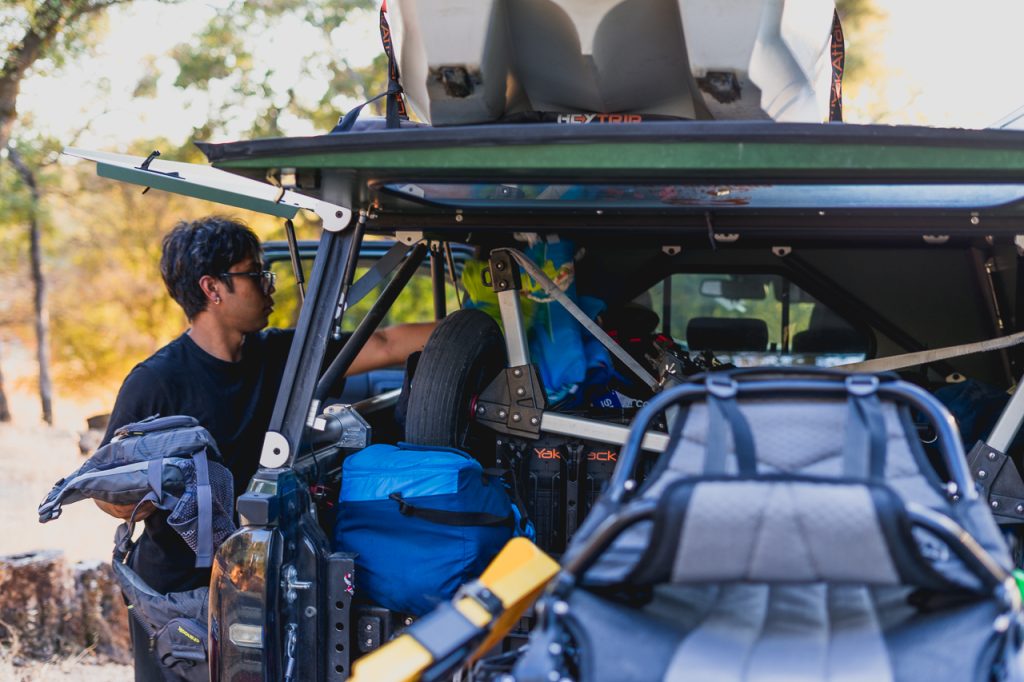
With most toppers, especially those with those small sliding windows, your easy of access to the bed is greatly affected. And in term of vertical space, naturally, topper are typically the height of the cab and restrict the size of what you can carry in the bed.
However, with my GFC’s large side doors, I don’t usually run into issues putting things inside and taking them out. I frequently use the doors to get to my gear. Not as easy with something like a traditional shell with smaller windows. Now in terms of vertical space, no argument there. But I don’t haul too many tall items and haven’t run into any real issues.
5. Reduced Cargo Space & Versatility
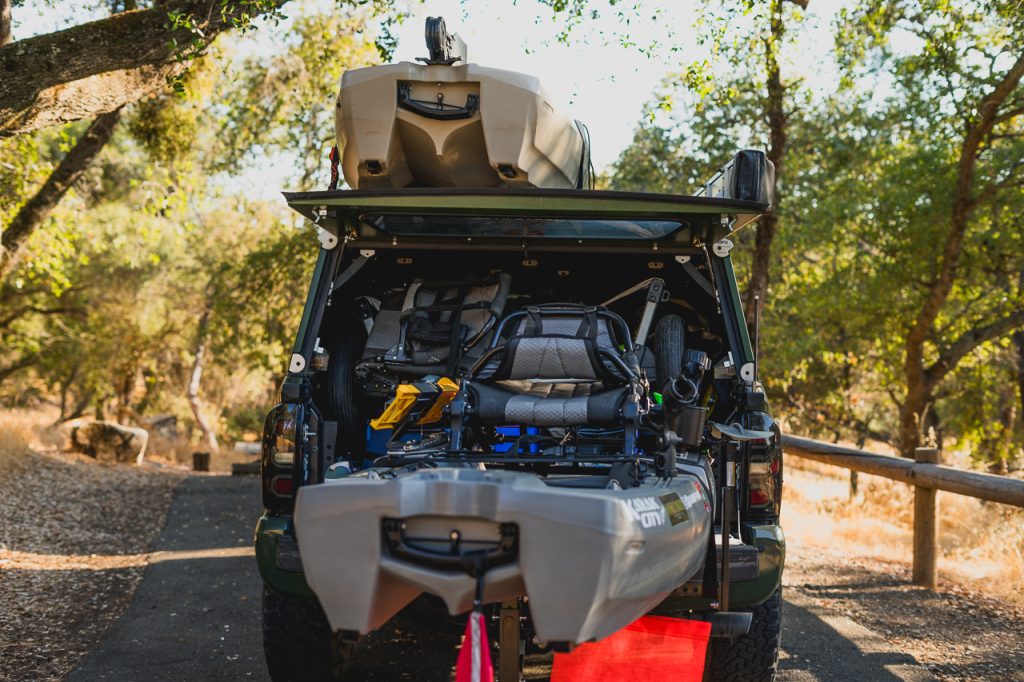
This one somewhat follows the last section. So there will be some overlap.
There’s definitely a reduction in space when you add a topper. But for most of us, we’re not trying to move a refrigerator or a massive dresser every day…
I don’t think I’ve ever (not once) had problems fitting whatever I needed in the bed since I installed the topper (almost 3 years). I can recall one trip where we had to pack the bed with four separate people’s camping gear, their range bags, range target stands, plus our food and water and we still had room to spare!
So is this really a valid point? I would say no. Unless you’re professional mover, haha.
6. Added Maintenance
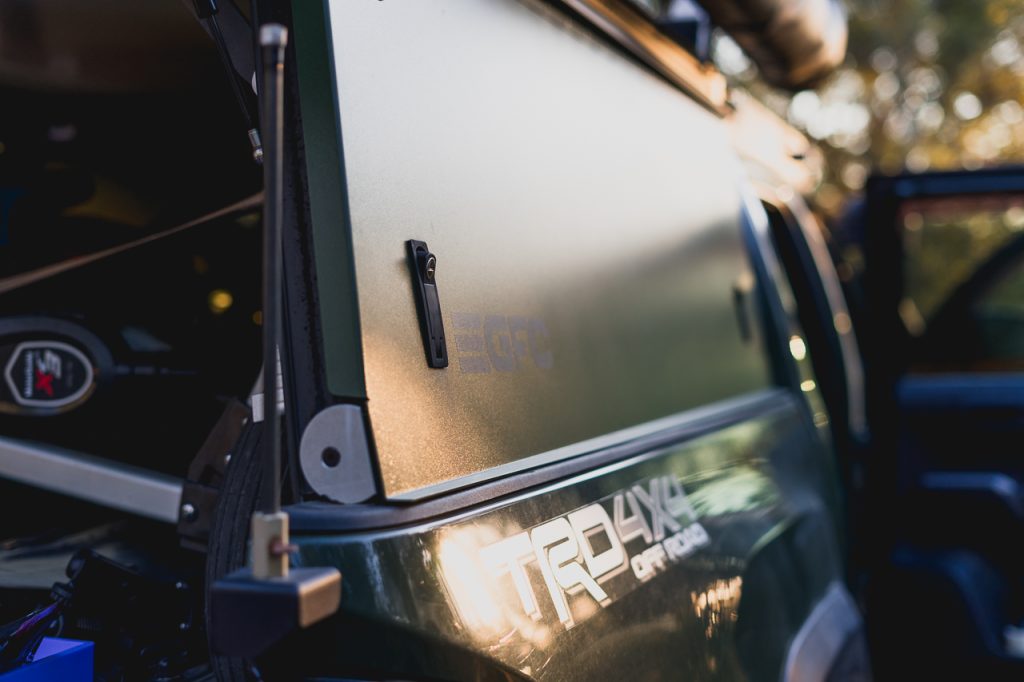
With adding any new part to your truck there comes additional maintenance and upkeep. The topper is pretty minimal. Most of them just need to be periodically torqued down and checked for any damaged seals, etc.
The GFC has a simple, strong, and robust construction. I haven’t had any additional maintenance to do besides checking bolt tightness. Shells make it hard to access the rear window, so I guess you could say it makes the washing part a little more difficult to reach tight places. But is that really an issue? Not for me.
7. Increased Fuel Consumption
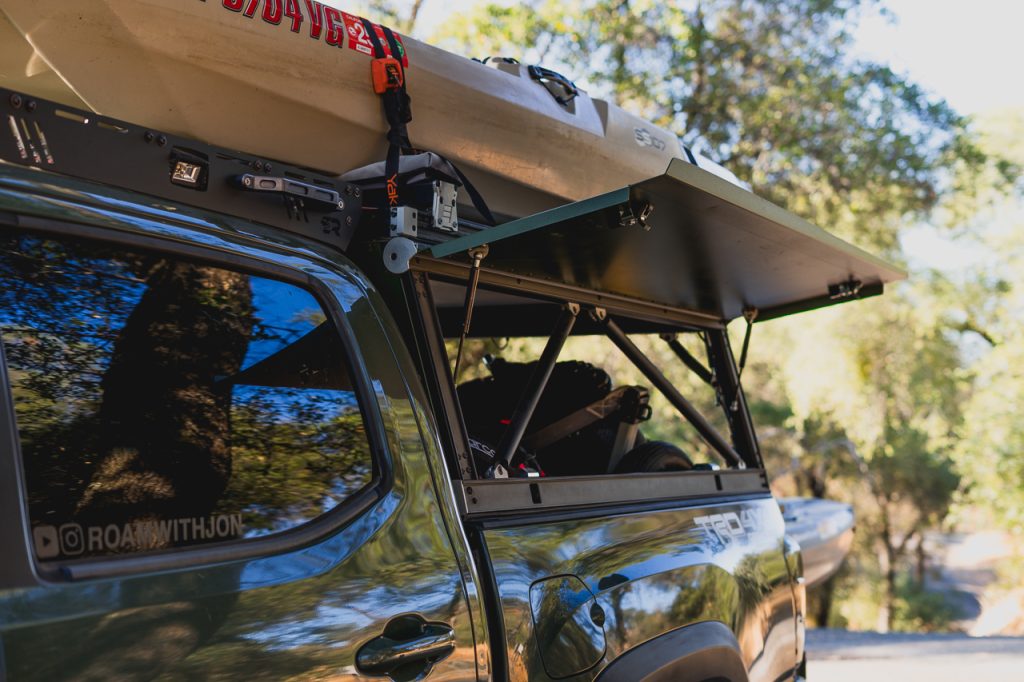
Fuel efficiency conversations can be funny, and somewhat ironic. We all decided to buy trucks – not hybrid sedans. Getting amazing gas mileage is not in the cards. But I get it, we need a reasonable MPG and would like to maintain good fuel economy as much as possible.
The added weight alone isn’t enough to make the truck burn more gas. At least not with only 135 lbs. That’s probably less than you, most passenger’s you carry, or that load of lumber for a weekend project. So the added weight alone won’t show up at the pump.
Now if we’re talking aerodynamics, the results could be surprising. Technically, an open truck bed causes a fair amount of drag. Most toppers follow the body lines and stop at cab height. If I was a scientist (I’m not), I’d say the sleeker profile definitely reduces drag, and therefore could (theoretically) help with fuel economy. At the end of the day, the point is that the topper likely won’t show any noticeable difference up or down in MPG. I haven’t noticed any myself.
8. Obstructed Rear Visibility
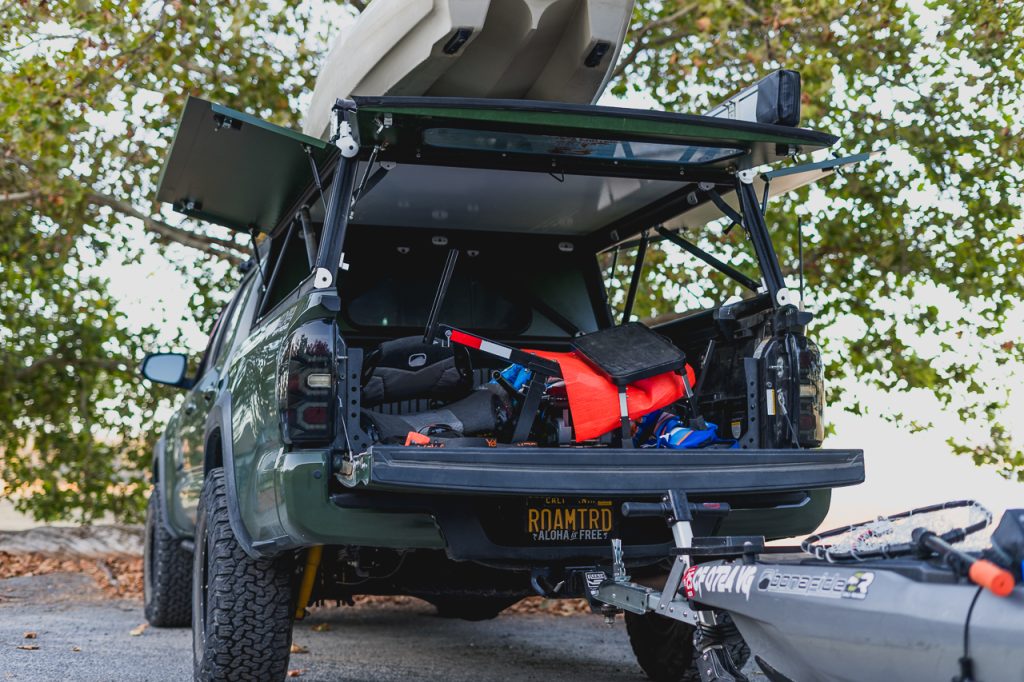
Yes, your rear field of view will be affected, however, this also completely falls on how you build out your topper. I have the optional front and rear windows on mine, which give me a more than acceptable amount of visibility. I think in this day and age every vehicle should have a back up camera anyway (and maybe a digital rearview mirror). So not a big deal… Next!
9. Aesthetics
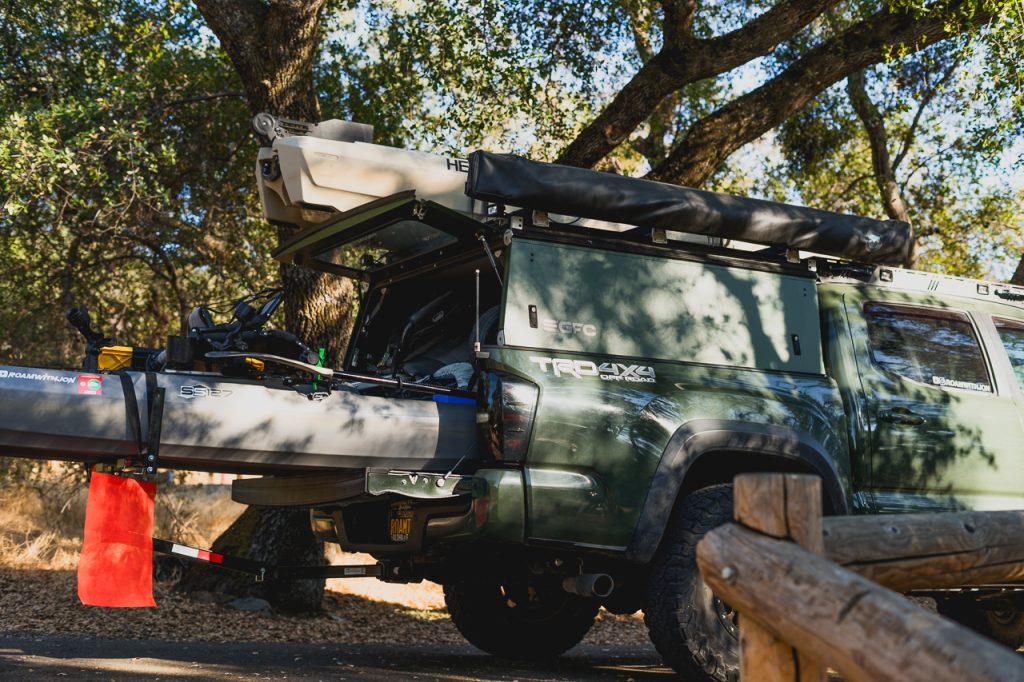
I know a lot of people don’t like the look of a topper. You either like the look or you don’t. I used to think nothing looked better than a nice open bed. Now, a truck bed without some kind of bed setup looks weird to me.
I feel like the topper really rounds out the look of the truck really well. and it gives a truck a more complete look. It does also depend on body lines. Some truck looks better and worse with shells. It varies. And of course, a massive amount of personal preference.
I will say, if you don’t like the traditional fiberglass designs, the GFC offers something much more rugged and completely different from a design perspective. It’s less OEM, but has that perfect amount of modern and sleek design.
10. Complex Installation
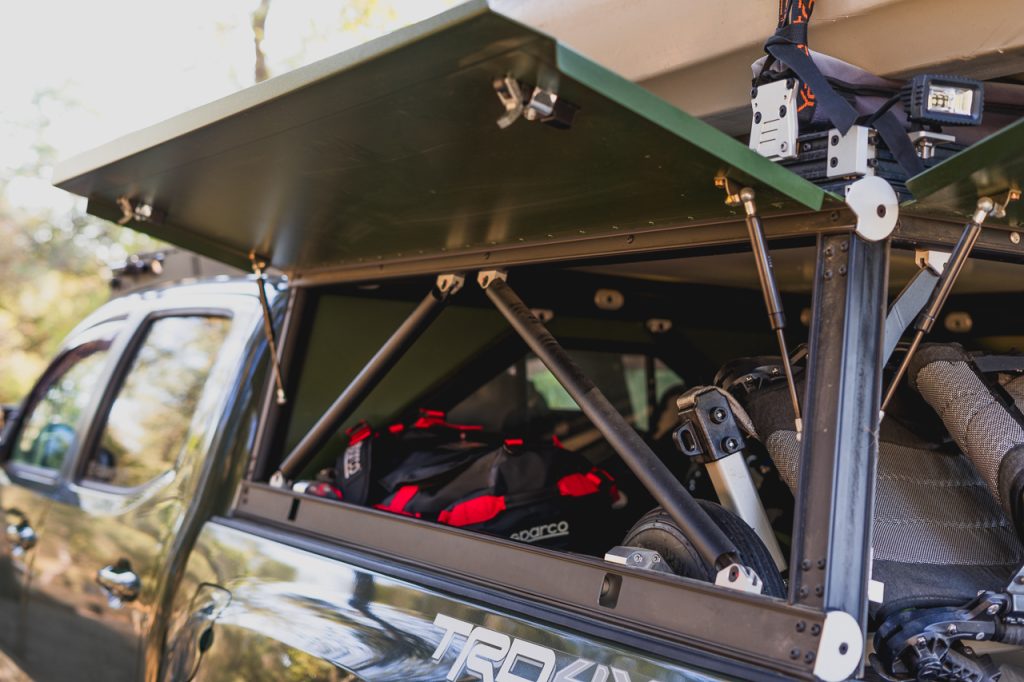
Given their size, toppers can be tough to install. Many dealers around the country offer installation services. So you’re not often left to do your own, so I would say this is not really a valid concern. Even so, simplicity and keeping the weight down is what makes it all much easier if you’re left installing one yourself from a secondhand purchase.
11. Weather Protection Limitation

Compared to an SUV, you won’t get complete weather resistance. I think this is obvious, but some people are surprised when their new truck bed cover isn’t 100% sealed. Truck beds are full of gaps, holes – places where debris and water can get through. When you add a cover, you reduce the amount of stuff getting in the bed by quite a bit. But no option out there is completely water and dust proof – regardless of what might be advertised. However, most toppers provide more than adequate sealing for the average user, even for those who like to sleep/camp inside.
The GFC uses a large seal between the bottom of the shell and the top of the bed rails. I have yet to see any water get through these areas. The areas that do allow water in are not the shell’s fault, but something you deal with when talking about truck beds in general. If you’re dedicated, you can add sealant under the bed rail covers, add larger dust seals by the tailgate, and seal any small holes you find. I know GFC has been testing a positive pressure system, to help create resistance to dust intrusion.
12. Additional Noise
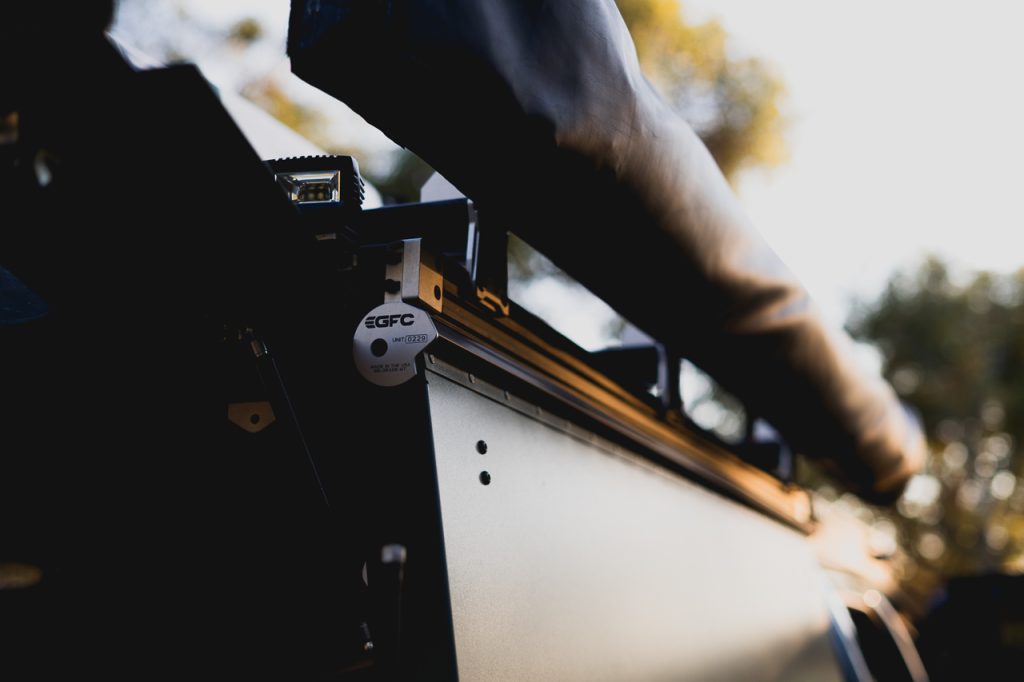
Nobody likes a noisy truck. But much like you can’t expect incredible MPG in a truck, you also shouldn’t expect a super quiet ride. Even so, most toppers don’t make a ton of noise.
For my GFC’s beef bars, if you do get them, they do create some additional wind noise. But it is so minimal I can’t even hear it over the sound of my roof rack and my BFGs tires. So is noise really a concern? Not really! At least not to any impactful level.
Final Thoughts
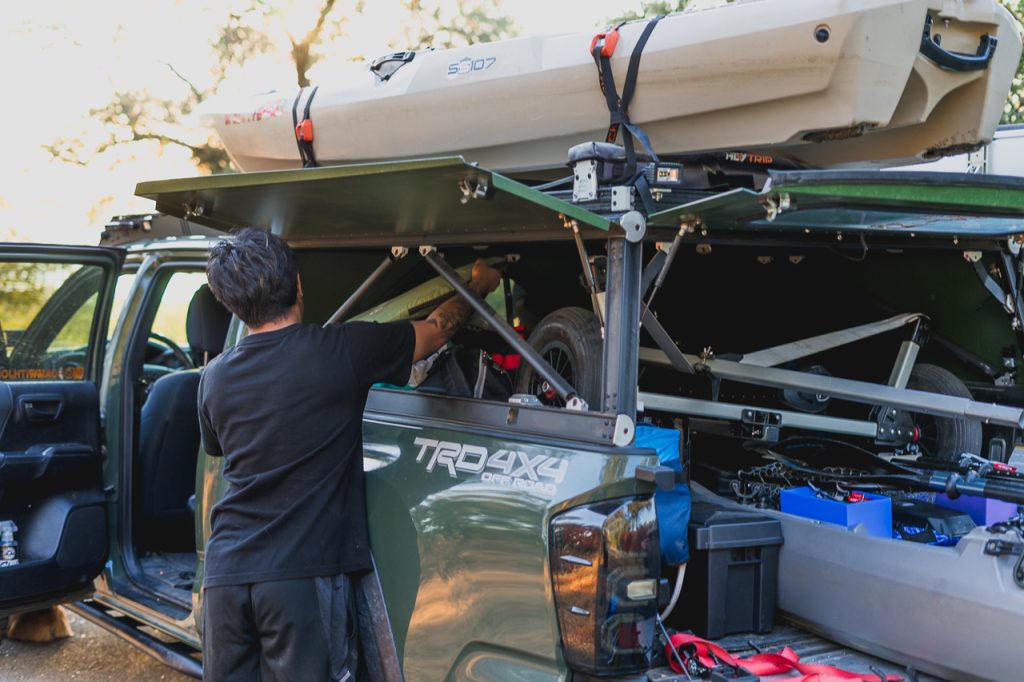
Well, I hope I broke down the discussion clearly. There’s a lot of reasons people say that they wouldn’t want to own some type of camper shell. But after running one for years, I can confidently say that most of them have solid counterpoints.
Is it a perfect fit for everyone? No, nothing is. And you can’t get around subjective feelings around things like aesthetics. But if you’re doing your research to see what’s best for you, I say that any cons are fleeting and are far outweighed by the pros.
Whichever brand you decide to go with, I know a camper shell of some kind will improve your daily use, and especially your outdoor adventures and hobbies.


I went from a Snugtop Fiberglass shell with a reinforced roof for a RTT to a GFC Topper in June. I saved over 70lbs in weight alone, and the added functionality of the side bed access was a game-changer for me. I also added a Spirit of 1876 Shoe Rack to mount my 35″ spare in the truck bed which diminished the need for a rear tire carrier swingout or bumper. I sold my Snugtop to buy the GFC Topper, so for about 3 months I went without any kind of bed cover; my MPG got way worse with the… Read more »
Quite the conversion story, haha. Fiberglass just doesn’t cut it for heavier off-roading and overlanding. I have their camper, and my buddy had the topper as well. Both setups work great. Personally, I like the integrated sleeping space.